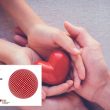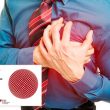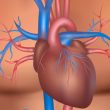Courtesy of Dr. Carlos Fava. Primary coronary angioplasty has been the treatment of choice for acute myocardial infarction (MI) for many years, but such strategy is associated with nonculprit lesions in a large group of patients. While it has been proven that nonculprit-lesion revascularization offers better outcomes, the groups that would benefit from it are...
ESC 2019 | EVOPACS: Evolocumab to Reduce Cholesterol in Acute Coronary Syndromes
Eight weeks of treatment with evolocumab added to a regimen of high-intensity statins in patients with acute coronary syndrome reduced significantly LDL cholesterol levels and was safe, compared with statins + placebo, according to the EVOPACS study presented last Saturday at the European Society of Cardiology (ESC) Congress 2019 Scientific Sessions in Paris and simultaneously...
ESC 2019 | New European Guidelines on “Chronic Coronary Syndromes”
In Paris, during the European Society of Cardiology (ESC) Congress 2019 Scientific Sessions, new guidelines for the diagnosis and treatment of chronic coronary syndromes were presented. This document, simultaneously published in Euro Heart J, updates the 2013 guidelines on stable ischemic heart disease and takes out the word “stable” so as to emphasize that the...
ESC 2019 | COMPLETE: Definitive Evidence for Infarction with Multivessel Disease
For patients with ST-segment elevation acute myocardial infarction and multivessel disease beyond the culprit artery, complete revascularization is superior to culprit-only treatment as regards the final endpoint, a composite of cardiovascular death, infarction, and ischemia-driven revascularization over a mean follow-up of 3 years. This information derives from long-awaited randomized study COMPLETE, finally presented at the...
Amount of Baseline Ischemia in Patients with Multivessel Disease and Long-Term Progress
According to this recent analysis of the MASS II trial, which will soon be published in JAMA, baseline ischemia is not associated with events at 10 years in patients with chronic stable angina. The ischemic burden induced through exercise does not predict events or long-term ventricular function. Such data add some suspense to the results...
Peri-Procedural Infarction in Angioplasty vs. Surgery in the Left Main Coronary Artery
According to the EXCEL trial, peri-procedural infarction was more common after left main coronary artery surgery compared with angioplasty, and it was strongly associated with increased 3-year mortality after controlling all possible confounding variables. This increased mortality was only present in extensive infarctions with an increase in CK-MB ≥10×. The EXCEL trial seems to want...
What Happens When We Are Blinded by Left Main Disease and Ignore All Other Lesions?
According to this recent Excel analysis, mortality seems to rise when the SYNTAX II score is not taken into account when defining the revascularization strategy. The difference does not reach statistical significance and further studies are required, but the message is clear: the left main coronary artery is not the only thing that matters; other...
Nonobstructive Coronary Lesions and Ventricular Dysfunction
Many patients arrive to the cath lab for a diagnostic coronary angiography after an echo showing severe ventricular dysfunction, even in asymptomatic patients. In many occasions, their coronary arteries are normal, and in many others, we find coronary disease that is not enough to warrant such severe ventricular dysfunction. Patients with heart failure are frequently...
EXCEL Outcomes: PCI vs CABG in Patients with Prior Cerebrovascular disease
Most certainly, as we read this title, we imagine the conclusion (as does the editor): patients with prior cerebrovascular disease (CEVD) benefit from a less invasive revascularization strategy, such as PCI. However, the EXCEL outcomes tell us that patients with left main coronary artery disease (LMCAD) and a history of CEVD will not benefit from...
Revascularization in Patients with Multivessel Disease, Diabetes, and Kidney Disease
According to this new study, in patients with coronary disease, diabetes, and chronic kidney disease who underwent revascularization through angioplasty or surgery, events are similar. This is one of the first studies painting the real picture for the prognosis of patients revascularized in these conditions (diabetes plus chronic kidney disease). At first sight, these...








